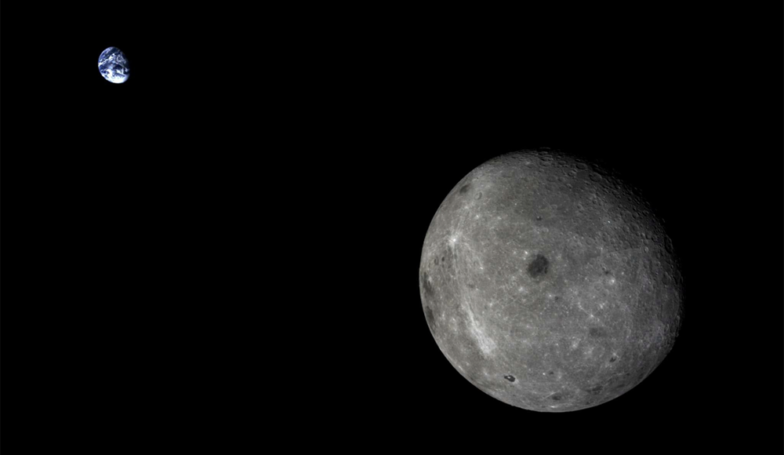Hurricanes and the Climate, Part 1
Disasters such as Hurricane Sandy raise many questions about the relationship between severe weather and human civilization. For example, could global warming cause changes in hurricane frequency and intensity? What can be done to minimize storm damage? And perhaps most poignant: do hurricanes, despite their destructiveness, serve a good purpose?
Climate change, especially when associated with anthropogenic causes, can be a controversial subject, sparking debate from various angles. Conflict about human influences on hurricane frequency and intensities continues. Recent storms, such as Hurricane Sandy, Hurricane Katrina, and others serve to intensify the discord. Some people cite these storms as evidence for human-induced climate change; while others point to the overall drought of hurricanes in recent years as evidence against anthropogenic causes, despite occasional large and damaging storm events.1
Hurricanes—more formally known as tropical cyclones—derive energy from the latent heat of moisture condensation gained from the ocean surface. This energy source distinguishes tropical cyclones from other low-pressure systems, such as extratropical cyclones, which typically develop as a consequence of horizontal temperature gradients. Several environmental prerequisites are necessary for tropical cyclone formation, including: a preexisting weather disturbance, warm sea surface temperatures (usually greater than 26˚C), and low vertical wind shear (little turning of winds with height). Changes to these factors, through either human or natural causes, influence the mean frequency and intensity of tropical cyclones.
Hurricane Sandy, which came ashore near Atlantic Beach, New Jersey, exhibited extraordinary low pressure (946 mb) at landfall, rivaling the “Long Island Express” Hurricane of 1938. The remarkable combination of the New York area’s concave coastal configuration, a full moon, and landfall at high tide were the primary factors that increased coastal flooding in New Jersey, New York, and Connecticut, such that The Battery (the southern tip of Manhattan Island) was hit with a storm surge up to 3 meters (10 feet) above normal high tide. At landfall, Hurricane Sandy was becoming an extratropical low-pressure system. Extratropical cyclones tend to be larger than tropical cyclones, and because Sandy was partly hurricane and partly extratropical, the circulation pattern—and thus area of influence—became uncharacteristically large. In New England terms, Sandy was a “nor’easter” with a hurricane at the center. Even without interaction between Sandy and the atmospheric circulation near New England, it is likely that a nor’easter would have formed in the area at about the time of Sandy’s landfall (though such a system might have been less intense).
Is Global Warming a Factor?
This brings us to the $64,000 question: was Hurricane Sandy made worse by anthropogenic climate change? A research team, led by environmental studies graduate student Jessica Weinkle,2 conducted a thorough analysis of tropical cyclone damage. Their results suggest that economic destruction from such storms has increased dramatically over the last century. Yet these researchers showed that the observed changes could be explained entirely as a result of societal factors unrelated to climate change. These factors included significant increases in and distribution of wealth, buildings, and populations near coastal areas during the twentieth century.
The authors further argue that anyone who suggests that the world is experiencing a “new normal” with respect to tropical cyclones is mistaken. Like others,3 Weinkle’s team points out that global tropical cyclone activity—though active during the late 1990s and early 2000s—has actually declined recently; and tropical cyclone landfalls were also more intense prior to 1970. In particular, from 1950–1969, land-falling, intense hurricanes occurred in the north Atlantic and western north Pacific at a 40 percent higher rate than during 1970–2010.
On a global scale, other researchers have noted no significant changes in land-falling tropical cyclone rates during the last century.4 Similarly, meteorologist Kerry Emanuel5suggested in a 2006 paper that global tropical cyclone occurrence has been stable, exhibiting a global frequency of about 90 systems annually with a 10 percent standard deviation. However, Emanuel did note that rises in sea surface temperatures (SST) since 1950 increase the potential for greater storm intensity and destructive capacity. Another team6 seems to agree with Emanuel’s observations, noting that while there has not been an increase in tropical cyclone frequency since 1970, there has been an increase in the number of intense tropical cyclones (Saffir-Simpson Category 4/5), although this trend has reversed since 2005.
It is important to observe that tropical cyclones do undergo natural and cyclical frequency variations not tied directly to long-term climate changes. For example, during the 1990s, the Atlantic Multidecadal Oscillation (AMO), a cyclical pattern of the Atlantic Ocean’s SSTs, shifted into a warm phase. This shift explains the overall elevation of the Atlantic’s SSTs since that time and, consequently, influences observed increases in Atlantic tropical cyclones. The potential for an increase in stronger storms associated with a stability in overall storm frequency seems supported by the observation that the geographic extent of warm waters favorable to strong hurricane formation (>28˚C) has expanded during the last 50 years; yet the region favorable to overall tropical cyclone formation has not expanded (>26˚C), implying relatively constant global tropical cyclone frequency.7
Climate researchers who forecasted changes in the relationship between tropical cyclones and climate have exhibited a variety of opinions. Although open questions remain, several elements surrounding the relationship between tropical cyclones and climate can be inferred from the literature. For example, in 2006, climate modeler Lennart Bengtsson and his team8 predicted no major changes in tropical cyclone intensities but expected minor reductions in the frequency of weak systems. They also suggested a tendency for weaker Atlantic storms and stronger eastern Pacific systems shifted closer to the equator. Adding to this, in 2004, researchers Liguang Wu and Bin Wang9 forecasted that western north Pacific tropical cyclone tracks might shift eastward (more “out-to-sea”) and that greater numbers of these systems could take “recurving” paths (west, then north, then northeast as they enter the extratropics).
A general theme emerging from the climate literature regarding tropical cyclones is that there could be an increase in intense cyclones in some areas, yet the overall number of tropical cyclones is likely to remain constant or slightly decrease.10 Association between these expected changes and specific human-induced causes is difficult to trace. However, researchers T. R. Knutson and R. E. Tuleya, at the NOAA Geophysical Fluid Dynamics Laboratory and the Old Dominion University, noted in a 2004 paper11that CO2-induced tropical cyclone intensity changes are unlikely to be detectable in historical observation and will probably not be detectable for decades to come. Emanuel agreed, saying “any increase in hurricane intensity that may have already occurred as a result of global warming is inconsequential compared to the natural variability.”12
It is important to note that increases in CO2 should not be equated with climate change. There are many variables that factor into climate change, both anthropogenic (human-influenced) and natural. For example, anthropogenic aerosol production represents a climate factor that has too often been minimized compared to CO2. For example, one research team13 found that, in terms of atmospheric radiative heating, the role of human-produced aerosols was potentially 60 times greater than that of well-mixed, human-generated greenhouse gases. This means that horizontal geographic temperature contrasts influenced by aerosols have a greater likelihood of influencing atmospheric circulation in a more significant and immediate way than CO2 and other greenhouse gases. Thus, aerosol effects, typically distributed heterogeneously, may induce atmospheric circulation changes that could redirect tropical and extratropical cyclone paths more efficiently than well-mixed greenhouse gases would.
With regard to tropical cyclones, rising sea levels is one of the most important issues related to both anthropogenic and natural climate change. In 2006, a research team, lead by atmospheric scientist R. A. Pielke,14 noted that sea level rise would contribute to increased impacts from storm surges even if hurricane intensity does not increase substantially. It is expected that, in a warming world, sea level rises due to both the thermal expansion of seawater and glacial melting. Regardless of cause, sea levels have rose about 16.5 cm (6.5 in.) between 1900 and 200015 (this value varies widely across the globe due to geographic factors). As long as this trend continues, however slowly, it will contribute to a moderate worsening of storm surges from both tropical and extratropical cyclones in low-lying coastal areas.
Role of Human Behavior
The core problem concerning sea level rise and tropical cyclones, however, may not be as much a factor of climate change as one of human behavior. Humans love the sea. In the last 100 years, humanity has located itself and its structures near coastlines at unprecedented levels. Yet, building too close to the ocean typically holds risks.
Paleoclimatology evidence shows that natural climate change has produced significant sea level changes in the past, ranging from 120 meters below present to about 20 meters above present sea level during the last 125,000 years. During portions of the Eemian (the previous interglacial warm period), sea levels reached levels as much as 4 to 6 meters higher than present.16 If such a sea level rise were to reoccur, low-lying coastal areas would be flooded—possibly giving new meaning to Jesus’ parable of the wise and foolish builders, in which the former built his house upon a rock but the latter built upon the sand (Matthew 7:24–27). Enjoying a day or two by the beach is one thing, but it would behoove us to be more mindful of the dangers the ocean poses to its long-term coastal neighbors.
We’ll continue this discussion of hurricanes and humanity in part 2, with a look at the good that can result from severe storms.
Dr. Kevin Birdwell
Kevin R. Birdwell received his PhD from the University of Tennessee in 2011 and currently serves as a meteorologist and atmospheric researcher in Oak Ridge, Tennessee.
Endnotes
- Ryan N. Maue, “Recent Historically Low Global Tropical Cyclone Activity,” Geophysical ResearchLetters 38 (July 20, 2011): L14803.
- Jessica Weinkle, Ryan Maue, and Roger Pielke, “Historical Global Tropical Cyclone Landfalls,” Journal of Climate 25, no. 13 (July 2012): 4729–35.
- Maue, “Recent Historically Low Global Tropical Cyclone Activity,” L14803.
- James B. Elsner, Xufeng Niu, and Thomas H. Jagger, “Detecting Shifts in Hurricane Rates Using a Markov Chain Monte Carlo Approach,” Journal of Climate 17, no. 13 (July 2004): 2652–66.
- Kerry Emanuel, “Climate and Tropical Cyclone Activity: A New Model Downscaling Approach,” Journal of Climate 19, no. 19 (October 2006): 4797–802.
- P. J. Webster et al., “Changes in Tropical Cyclone Number, Duration, and Intensity in a Warming Environment,” Science 309, no. 5742 (September 16, 2005): 1844–46.
- Judith Curry, “Frankenstorm,” Climate Etc. (blog), October 30, 2012, https://judithcurry.com/2012/10/30/frankenstorm/#more-10332.
- Lennart Bengtsson, Kevin I. Hodges, and Erich Roeckner, “Storm Tracks and Climate Change,” Journal of Climate 19, no. 15 (August 2006): 3518–43.
- Liguang Wu and Bin Wang, “Assessing Impacts of Global Warming on Tropical Cyclone Tracks,” Journal of Climate 17, no. 8 (April 2004): 1686–98.
- Curry, “Frankenstorm,” https://judithcurry.com/2012/10/30/frankenstorm/#more-10332.
- Thomas R. Knutson and Robert E. Tuleya, “Impact of CO2-Induced Warming on Simulated Hurricane Intensity and Precipitation: Sensitivity to the Choice of Climate Model and Convective Parameterization,” Journal of Climate 17, no. 18 (September 2004): 3477–95.
- Kerry Emanuel, “Response of Tropical Cyclone Activity to Climate Change: Theoretical Basis,” in Hurricanes and Typhoons, eds. Richard J. Murnane and Kam-Biu Liu (New York: Columbia University Press, 2004), 395–407.
- Toshihisa Matsui and Roger A. Pielke Sr., “Measurement-Based Estimation of the Spatial Gradient of Aerosol Radiative Forcing,” Geophysical Research Letters 33, no. 11 (June 2006): L11813.
- Roger Pielke et al., “Reply to “Hurricanes and Global Warming Potential Linkages and Consequences,” Bulletin of the American Meteor. Society 87 (2006): 628–31.
- Donald Rapp, The Climate Debate, (printed by author, 2012), 438.
- Jonathan T. Overpeck et al.. “Paleoclimatic Evidence for Future Ice-Sheet Instability and Rapid Sea-Level Rise,” Science 311, no. 5768 (2006): 1747–50.






